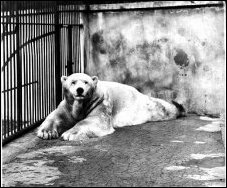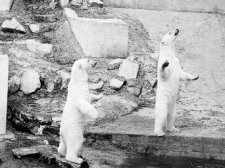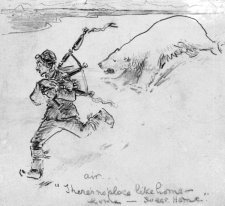| Seals, walruses and bears |
|
Polar bears Ursus maritimus Polar bears have a circumpolar distribution living on the sea ice, on islands and along the coast. They are big bears weighing up to 600 kg (1300 lbs). Their thick coast of fur is pure white, though in practice often yellowish due to the oxidation of oil from the seals that they hunt. The only unfurred parts of the body are the footpads and the tip of the nose, which is black, like the rest of the underlying skin. Whalers often had a lot of time on their hands as they searched for whales and would shoot bears whenever the opportunity arose. To some extent this was regarded as a sport, but there was a ready and valuable market for skins. Even today, tanned polar bear pelts sell for $500–3,000, depending on their size and quality. Live bears were also in demand as display animals for Victorian zoos and menageries. Polar bears are still one of the central attractions of the famous Moscow circus. The awful conditions in which bears were housed, once back in Europe, are captured by George Washington Wilson's photograph of a caged bear, taken in the late 1800s. The situation had not improved much by 1959 if the sterile environment of the bear pit at Calder Park Zoo was anything to go by. As you can imagine, catching and transporting home one of these most formidable of predators must have been a highly risky business. The library of Aberdeen University has in its collections the diary of a whaler in which he describes, most graphically, the capture of a bear in the Arctic. |
| |


